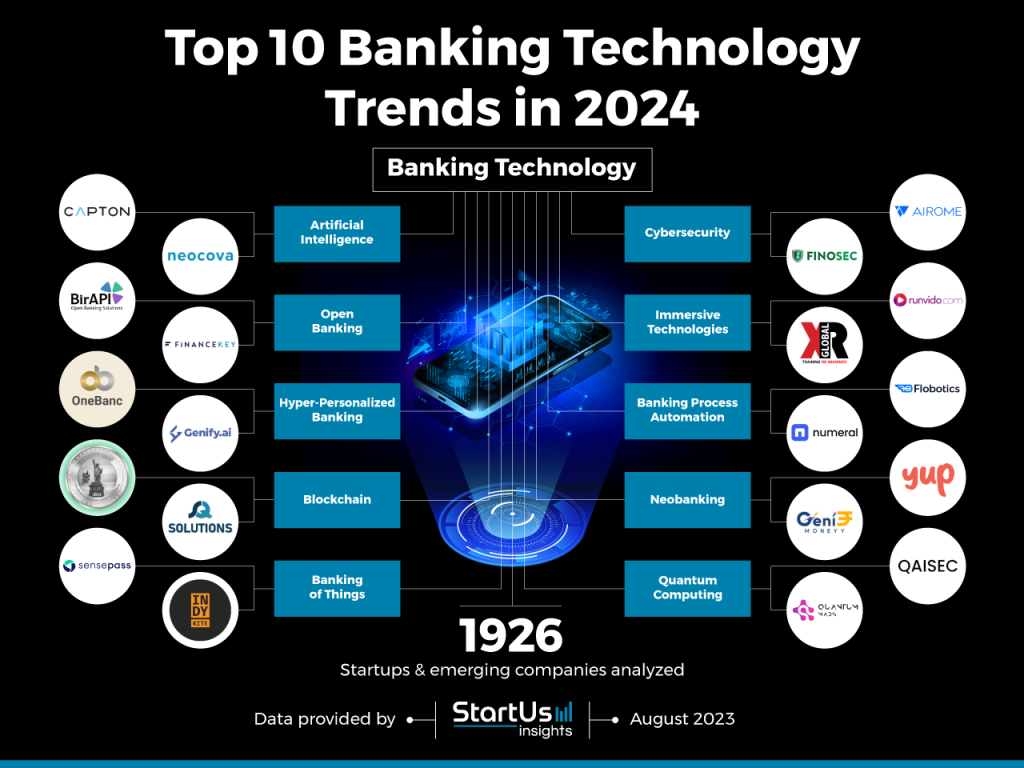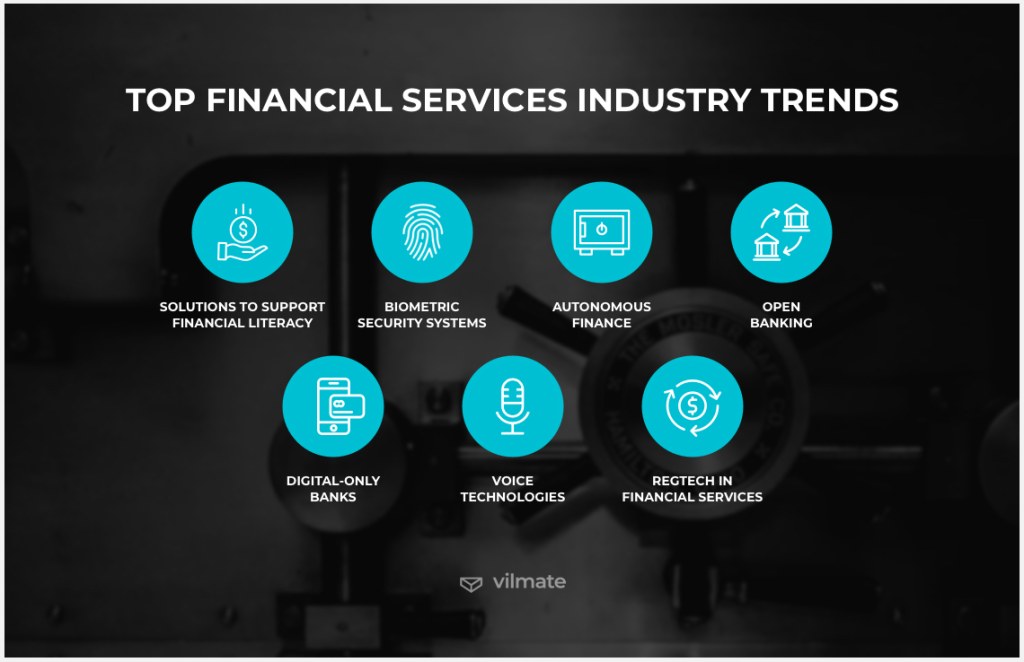Embracing The Power Of New Technology Trends In The Financial Services Industry: A Path To Success
New Technology Trends in the Financial Services Industry
Introduction
Dear Readers,
Welcome to an exciting journey into the world of new technology trends in the financial services industry. In this article, we will explore the latest advancements and innovations that are transforming the way financial services are delivered and experienced. From artificial intelligence and blockchain to biometrics and virtual reality, we will delve into how these technologies are reshaping the industry and what it means for businesses and consumers alike.
2 Picture Gallery: Embracing The Power Of New Technology Trends In The Financial Services Industry: A Path To Success


Join us as we uncover the fascinating world of new technology trends in the financial services industry and discover how they are revolutionizing the way we manage money, make transactions, and access financial services.
Get ready to be amazed by the possibilities that lie ahead!
Table: New Technology Trends in the Financial Services Industry
Technology
Description
Benefits
Image Source: licdn.com
Artificial Intelligence
AI-powered systems and algorithms that mimic human intelligence to perform tasks and analyze data.
Improved customer service, personalized recommendations, fraud detection, and risk assessment.
Blockchain
A decentralized and secure ledger that records transactions across multiple computers.
Enhanced security, transparency, and efficiency in financial transactions.
Biometrics
Authentication methods based on unique physical or behavioral characteristics.
Enhanced security, convenience, and protection against identity theft.
Virtual Reality
Computer-generated simulations that allow users to interact with a virtual environment.
Immersive customer experiences, virtual tours, and training simulations.
What are the New Technology Trends in the Financial Services Industry?
Technology is rapidly transforming the financial services industry, and several key trends are driving this transformation. Let’s explore each of these trends in more detail:
1. Artificial Intelligence (AI)

Image Source: startus-insights.com
AI is revolutionizing the financial services industry by enabling machines to mimic human intelligence and perform tasks that previously required human intervention. From chatbots that provide customer support to algorithms that analyze financial data, AI is being used to streamline operations, improve customer service, and enhance decision-making processes.
2. Blockchain
Blockchain is a decentralized and secure ledger that records transactions across multiple computers. It eliminates the need for intermediaries, provides transparency, and enhances the security and efficiency of financial transactions. With blockchain, financial institutions can reduce costs, increase trust, and streamline processes such as cross-border payments and supply chain financing.
3. Biometrics
Biometrics refers to authentication methods based on unique physical or behavioral characteristics, such as fingerprints, voiceprints, and facial recognition. By replacing traditional authentication methods such as passwords and PINs, biometrics offer enhanced security, convenience, and protection against identity theft. Financial institutions are increasingly adopting biometric technologies to verify customer identities and secure sensitive transactions.
4. Virtual Reality (VR)
Virtual Reality is revolutionizing the way financial services are delivered and experienced. By creating computer-generated simulations, VR allows users to interact with a virtual environment and immerse themselves in virtual tours, training simulations, and financial planning scenarios. VR is transforming customer experiences, enabling financial institutions to provide personalized and engaging services.
Who is Driving the Adoption of New Technology Trends in the Financial Services Industry?
The adoption of new technology trends in the financial services industry is being driven by a diverse range of stakeholders:
1. Financial Institutions

Image Source: vilmate.com
Financial institutions, including banks, insurance companies, and investment firms, are at the forefront of adopting new technology trends. They recognize the potential of these technologies to enhance efficiency, improve customer experiences, and gain a competitive edge in the market.
2. Fintech Startups
Fintech startups are disrupting the financial services industry by leveraging new technology trends to offer innovative products and services. They are challenging traditional financial institutions by providing more accessible, affordable, and user-friendly alternatives.
3. Regulatory Bodies
Regulatory bodies play a crucial role in shaping the adoption of new technology trends in the financial services industry. They are responsible for establishing guidelines and standards to ensure the security, privacy, and ethical use of these technologies.
When Will We See the Impact of New Technology Trends in the Financial Services Industry?
The impact of new technology trends in the financial services industry is already being felt, and it will continue to grow in the coming years. As technology continues to advance and become more accessible, the adoption and integration of these trends will become more widespread.
1. Artificial Intelligence (AI)
AI is already being used by financial institutions to automate processes, improve customer service, and enhance risk assessment. As AI technologies mature and become more sophisticated, their impact will continue to grow.
2. Blockchain
Blockchain is already being adopted by financial institutions to streamline processes such as cross-border payments and trade finance. As the technology matures and regulatory frameworks are established, its impact will expand to other areas of financial services.
3. Biometrics
Biometric technologies are already being used for authentication purposes by financial institutions. As these technologies become more advanced and integrated with other systems, their adoption will become more widespread.
4. Virtual Reality (VR)
Virtual Reality is still in its early stages of adoption in the financial services industry. However, as the technology becomes more affordable and user-friendly, its impact will grow, enabling financial institutions to provide immersive customer experiences and innovative services.
Where are New Technology Trends in the Financial Services Industry Being Implemented?
New technology trends in the financial services industry are being implemented across various areas:
1. Banking
Banks are adopting new technology trends to streamline operations, improve customer experiences, and enhance security. From AI-powered chatbots for customer support to blockchain-based solutions for cross-border payments, banks are leveraging technology to stay competitive in the digital age.
2. Insurance
Insurance companies are using new technology trends to improve underwriting processes, enhance risk assessment, and provide personalized customer experiences. From AI algorithms for claims processing to telematics devices for usage-based insurance, technology is reshaping the insurance industry.
3. Investment and Wealth Management
Investment firms and wealth management companies are leveraging new technology trends to provide personalized investment advice, automate portfolio management, and enhance customer experiences. From robo-advisors to VR-based financial planning tools, technology is transforming the way investments are made and managed.
Why Should We Embrace New Technology Trends in the Financial Services Industry?
Embracing new technology trends in the financial services industry offers several benefits:
1. Enhanced Efficiency
New technology trends enable financial institutions to automate processes, reduce costs, and improve operational efficiency. From AI algorithms that analyze vast amounts of data to blockchain-based solutions that streamline transactions, technology enhances the efficiency of financial services.
2. Improved Customer Experiences
New technology trends enable financial institutions to provide personalized, convenient, and engaging customer experiences. From AI-powered chatbots that offer round-the-clock customer support to VR-based simulations that help customers visualize their financial goals, technology enhances the way financial services are delivered and experienced.
3. Enhanced Security and Fraud Prevention
New technology trends offer enhanced security measures and fraud prevention capabilities. Biometric authentication methods, such as fingerprint and facial recognition, provide a higher level of security compared to traditional authentication methods. Blockchain, with its decentralized and immutable nature, enhances the security and transparency of financial transactions.
4. Accessible and Affordable Financial Services
New technology trends enable financial institutions to reach previously underserved populations and provide accessible and affordable financial services. Fintech startups leverage technology to offer innovative solutions that cater to the needs of unbanked and underbanked individuals.
How Can We Embrace New Technology Trends in the Financial Services Industry?
To embrace new technology trends in the financial services industry, stakeholders must:
1. Stay Informed
Stay informed about the latest advancements and innovations in the financial services industry. Attend industry conferences, read research papers, and follow thought leaders to stay up-to-date with new technology trends.
2. Foster Collaboration
Foster collaboration between financial institutions, fintech startups, regulatory bodies, and other stakeholders. Collaboration enables the sharing of knowledge, resources, and expertise, leading to the development and adoption of innovative solutions.
3. Invest in Infrastructure and Talent
Invest in the necessary infrastructure and talent to support the adoption of new technology trends. This includes upgrading IT systems, implementing robust cybersecurity measures, and attracting and retaining skilled professionals.
4. Embrace a Culture of Innovation
Embrace a culture of innovation within financial institutions. Encourage employees to think outside the box, experiment with new technologies, and embrace a mindset of continuous learning and improvement.
Frequently Asked Questions (FAQ)
1. What is the role of artificial intelligence in the financial services industry?
Artificial intelligence plays a crucial role in the financial services industry by enabling machines to perform tasks that previously required human intervention. It is used for customer service, fraud detection, risk assessment, and personalized recommendations.
2. How does blockchain enhance the security of financial transactions?
Blockchain enhances the security of financial transactions by providing a decentralized and secure ledger that records transactions across multiple computers. It eliminates the need for intermediaries and ensures the transparency and immutability of transaction data.
3. What are the advantages of biometric authentication in financial services?
Biometric authentication offers several advantages in financial services. It provides enhanced security, convenience, and protection against identity theft. Biometric data, such as fingerprints and facial recognition, are unique to individuals and cannot be easily replicated.
4. How can virtual reality transform customer experiences in the financial services industry?
Virtual reality can transform customer experiences in the financial services industry by providing immersive and engaging interactions. It allows customers to take virtual tours of properties, experience financial planning scenarios, and participate in training simulations.
5. What are the risks associated with embracing new technology trends in the financial services industry?
Embracing new technology trends in the financial services industry comes with certain risks. These include cybersecurity threats, data privacy concerns, and regulatory challenges. It is crucial for financial institutions to establish robust security measures and comply with regulatory requirements.
Conclusion
In conclusion, new technology trends are revolutionizing the financial services industry, offering opportunities to enhance efficiency, improve customer experiences, and provide innovative solutions. From artificial intelligence and blockchain to biometrics and virtual reality, these technologies are reshaping the way financial services are delivered and accessed.
As stakeholders in the financial services industry, it is essential to embrace these trends, stay informed, foster collaboration, invest in infrastructure and talent, and embrace a culture of innovation. By doing so, we can unlock the full potential of new technology trends and drive positive change in the industry.
So, let’s embrace the future of finance and embark on a journey of innovation and transformation!
Best regards,
Your Friends at the Financial Services Industry
Final Remarks
Disclaimer: The information provided in this article is for general informational purposes only and should not be considered as professional advice. We recommend consulting with a qualified financial advisor or professional before making any financial decisions.
Remember, technology is constantly evolving, and new trends may emerge in the future. It is essential to stay updated and adapt to the changing landscape of the financial services industry.
Thank you for reading, and we hope you found this article insightful and informative!
This post topic: Latest Technology Trends


